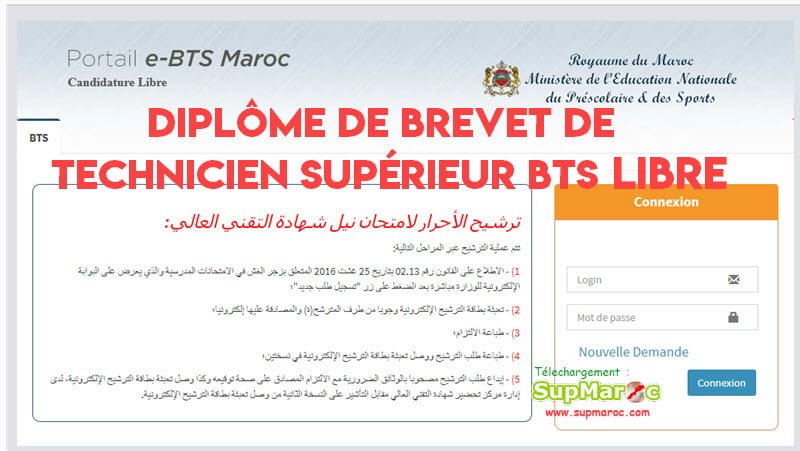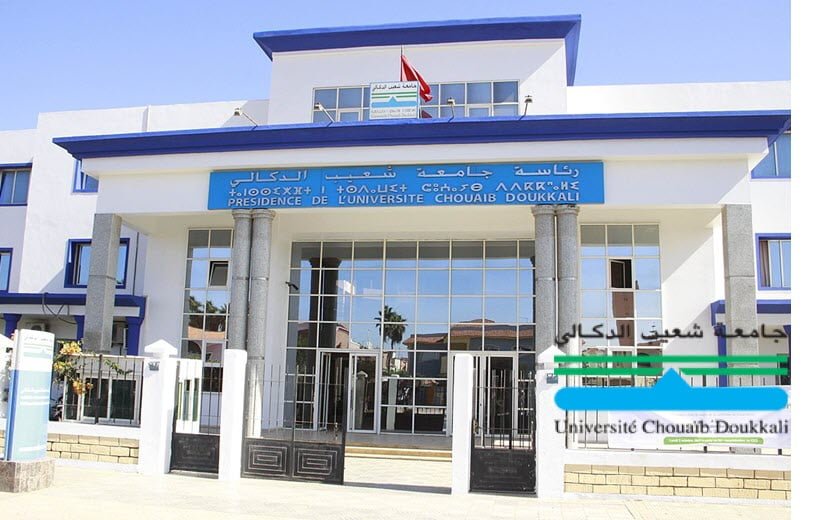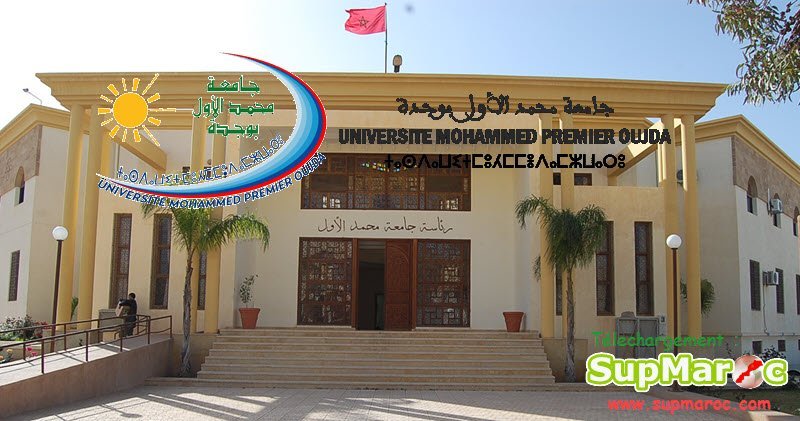La Faculté des Sciences et Techniques de Settat
APPEL A CANDIDATURE
CYCLE D’INGENIEUR D’ETAT
Rentrée Universitaire 2013/2014

La Faculté des Sciences et Techniques de Settat lance un appel à candidature pour inscription dans les cycles d’ingénieurs suivants :
Formations dispensées
Intitulés |
| Réseaux et Télécommunications |
| Génie Logistique et Transport |
| Procédé et Ingénierie Chimique |
| Sciences et Ingénierie de l’Environnement |
Génie informatique* |
Conditions d ’accès :
Etre titulaire d’un bac+2 : Admissible en classes préparatoires, DEUST, DEUG,
DUT, BTS ; ou d’un diplôme reconnu équivalent.
Procédure d’inscription:
L’inscription En Ligne Par le lien: http://www.fsts.ac.ma:8080/LMI2013/
Dossier de Candidature à présenter le jour du concours écrit :
– Copies légalisées des relevés de notes des deux dernières années d’études
– Copie légalisée du Baccalauréat
– Copie légalisée du diplôme ou attestation de réussite (DEUST, DEUG, DUT, …)
– Copie du CIN
Dates à retenir :
- Date limite de préinscription en ligne le 17 juillet 2013 à Midi
- Résultat de la présélection : 19 juillet 2013
- Concours écrits entre 22 et 26 juillet 2013
- Résultat de l’écrit à partir 29 juillet 2013
- Entretien oral du 01 au 04 aout 2013
- Résultats définitifs à partir du 05 Aout 2013
- Inscription du 09 au 13 Septembre 2013
Remarque : Les candidats doivent consulter régulièrement le site web pour être au courant de toute modification dans le planning des concours.
* Les dates du concours pour GI auront lieu début Septembre.
CYCLE D’INGENIEUR D’ETAT Accès en Deuxième
année Rentrée Universitaire 2013/2014
La Faculté des Sciences et Techniques de Settat lance un appel à candidature pour inscription en 2ème année dans le(s) cycle(s) d’ingénieurs suivants :
Formations dispensées
Réseaux et Télécommunications
Conditions d ’accès :
Etre titulaire d’une licence Sciences et Technique en Génie Electrique, EEA, Réseau et Télécommunication, ou d’un diplôme reconnu équivalent.
Procédure d’inscription:
L’inscription En Ligne Par le lien: http://www.fsts.ac.ma:8080/LMI2013/
Dossier de Candidature à présenter le jour du concours écrit :
– Copies légalisées des relevés de notes des deux dernières années d’études
– Copie légalisée du Baccalauréat
– Copie légalisée du diplôme ou attestation de réussite (Licence Sciences et Techniques ou équivalent)
– Copie du CIN
Dates à retenir :
- Date limite de préinscription en ligne le 17 juillet 2013 à Midi
- Résultat de la présélection : 19 juillet 2013
- Concours écrits entre 22 et 26 juillet 2013
- Résultat de l’écrit à partir 29 juillet 2013
- Entretien oral du 01 au 04 aout 2013
- Résultats définitifs à partir du 05 Aout 2013
- Inscription du 12 au 16 Aout 2013
Remarque : Les candidats doivent consulter régulièrement le site web pour être au courant de toute modification dans le planning des concours.








merci
Bjr, j’ai remplis le formulaire, je clique sur valider mais ca change rien, je c pa si le probleme est sur site ou quoi??? merci d’avoir me repondre.
Interesting that they were making a 100% pale malt « small ale » as early as 1821. And it had a hiehgr hopping rate per barrel than the TT porter, which has the lowest hops per barrel of any of the brews. I suspect you’re right about the FSt being « family stout » rather than, say « foreign stout », because its hop rate is the lowest of the stouts, and while its gravity is much the same as the porter it seems to earn its « stout » name by containing more brown malt than the porter, in both the pre-Wheeler and post-Wheeler iterations, which presumably gave a slightly sweeter flavour, making it more acceptable to « family » drinkers (although looking at the comparative FGs and attenuations, it may be I don’t know what I’m talking about )
Sunghir are « unmistakable » H17’21. At least as much as HVS-I can tell us. I do not know where Jean got her labels for the doblue Sunghir haplotype but I do know that she is at least as reluctant as you are, D., of accepting a pre-Neolithic H. Like you, she is trapped in a labyrinth of misleading molecular clock hunches and the belief of the « Zilhao school » of total demic replacement, which is contested by most other prehistorians I know of (and even the data of the only incursion Zilhao himself made into ancient population genetics, linked above). Obviously identifying mtDNA H of all haplogroups by means of just HVS-I is nigh on impossible (many H sublineages and notably H1 are « CRS » by haplotype). It seems also real that there was more commonality of U5 and U4 in Paleolithic times but it is almost impossible that all the R* and R-CRS HVS-I sequences are all U*, as was the case with two Swabian CRS haplotypes. The greatest expansion of unmistakable U5 and U4 clades is actually found in the Epipaleolithic only, being previously quite rare: 1/2 U5 in Andalusian Solutrean and 1/24 U4 in the Oranian of Taforalt. There are two other cases of U but are not U5 nor U4 but U* and U2, being probably as much unrelated to the argument as N* could be. It is only in the Epipaleolithic when the U5 and U4 ancient samples swell, essentially taking over all the northern European plains… but remaining at relative low levels in Iberia: 1/9 U5b1c2 and 1/9 U4a3. What I see with all this mtDNA data so far is continuity in Iberia (at least in Portugal) and much larger population changes in Central and Northern Europe, which do not seem to stop with Neolithic anyhow. Much of Southern Europe anyhow remains ill-sampled. (last updated on May 9th).